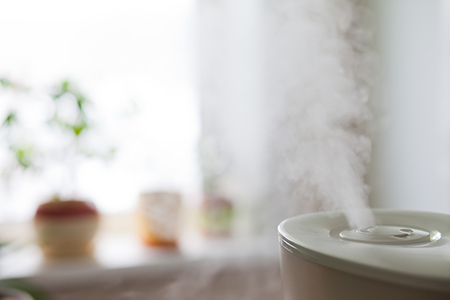(TNS)—A greater focus on health and well-being is driving sales of products like home air purifiers, with many people thinking these devices will make indoor air cleaner.
Sales of these products are forecast to see a compounded annual growth rate of around 10 percent in 2015-2020, according to a 2015 report published by TechSci Research.
But health experts say the machines are mostly unnecessary unless a person has a lung condition like asthma or chronic obstructive pulmonary disease (COPD). They advise homeowners to take other steps to clear the air before investing in one of these devices, especially since ongoing maintenance and expense are required to ensure that the units work properly.
Adjust your expectations. Dr. Clayton Cowl, chair of the division of preventive occupational and aerospace medicine at Mayo Clinic in Rochester, Minn., and a pulmonologist, says buyers need to understand the limitations of air purifiers.
“I think it’s a waste of money for people who feel that sticking (one) in their home is suddenly going to rid them of all respiratory diseases. That they’ll never be ill, and that’s all they need, and they’re completely protected. That is not the case,” he says.
Patti Solano, director of lung health for the Lung Association in Greater Chicago, says air purifiers won’t clean the entire home, either. Portable air purifiers, the most common, at best can improve a room.
But for people who have lung conditions, investing in better filters for their furnace and buying a portable air purifier can help, Solano says.
She says the best air purifiers use true high-efficiency particulate air (true HEPA) filters, which are proven to trap 99.97 percent of particles of 0.3 microns in size.
“We’re looking at these more for patients who have asthma, COPD, anyone that might have any kind of lung disease. These do help,” she says.
True HEPA filters, as opposed to “HEPA-type” filters, can trap most pollens, dust and pet dander, she says. Additionally, some air purifiers have carbon filters to remove tobacco and cooking smoke.
Ed Perratore, senior editor for home and appliance at Consumer Reports, says that in its tests, the best-performing air purifiers were the Honeywell HPA300 ($300, 435-square-foot room) and the Whirlpool Whispure APK1030K ($349.99, 500-square-foot room).
What to watch for. Solano says that, because there are so many different models on the market, buyers need to do their homework. She says the Environmental Protection Agency’s website has a thorough review of what shoppers should consider on its Indoor Air Quality page.
Perratore, Cowl and Solano says homeowners should stick to filter-type air purifiers and avoid those that use ozone to clean the air.
“It can act as a respiratory irritant. So it paradoxically does harm as opposed to actually helping,” Cowl says.
Solano says ozone is used extensively for water purification and helps decontaminate unoccupied space from certain chemicals and biological contaminants — for instance, after a fire — but she pointed out that ozone in water is not the same as ozone in air.
Aside from fan speeds, Perratore says that, in its testing, Consumer Reports found there’s little need to pay more for any special features on portable air purifiers.
Fan speeds are important because portable air purifiers are noisy, and they’re usually used in bedrooms. However, Perratore says that, when the devices are used on low speeds, they sometimes aren’t as efficient. The two top Consumer Reports picks work well on high and low speeds.
Solano, Cowl and Perratore says the units work best when they’re in rooms where the door is shut and are cleaned as well as possible to remove lung irritants. The filters must be changed regularly.
The maintenance and cost of these devices may make them a last resort for people without lung diseases, Perratore says. True HEPA filters for the Honeywell and Whirlpool units are $35 and $99, respectively. Then there’s the energy cost to run the units, he added.
There are also limits to what portable air purifiers can catch. EPA notes that large particulates like dust mites and cockroach allergens may not be caught by these units. And Cowl says people who suffer from seasonal allergies may not get that much relief from having the air purifiers around.
“I don’t think any air filtration system will completely prevent that,” he says.
Other options. Before buying an air purifier, Cowl, Solano and Perratore suggested checking out other options for cleaning indoor air. Better furnace filters can trap pollutants, Cowl says, but those must be changed regularly too. Look for the minimum efficiency reporting value (MERV) for air filters. This rating (1 to 20) is a standard for overall effectiveness. The higher the MERV rating, the more particulates the filter will screen out. True HEPA filters are rated between 17 and 20.
However, Cowl says, many furnaces aren’t designed to use true HEPA filters, so they may cause the furnace to work harder.
Pillow and mattress encasements can limit dust mites in the bed, Solano says. And keeping a clean home is half the battle.
“Open the windows, dust, vacuum with a HEPA vacuum; that would be the best thing. These are other things you can really do besides getting (an air purifier),” she says.
©2016 Chicago Tribune
Distributed by Tribune Content Agency, LLC.




